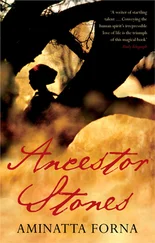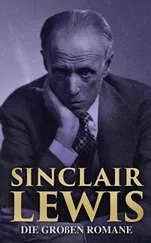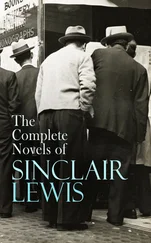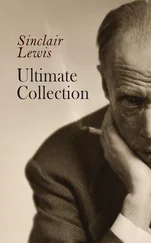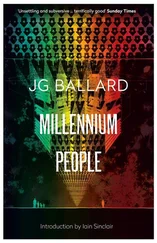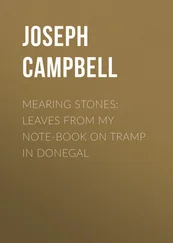I struggled to focus on an author photograph that looked like a polished silver implant, a tiny mirror revealing … what? Awkward head, heavy, balding, wincing from the light, falling away to one side; lolling like an idiot. No question, it was my face. As I was then , in historical Hackney, when an American woman, New Yorker, walked me down to the canal for a photo shoot (results never used, filed as: ‘unlikely to help publicity campaign’). Wrong age, wrong sex, wrong race. Wrong shape: crinkled around the eyes, but somehow in shock, in recent receipt of a large brown envelope. Mouth buttoned. Lips sealed. Neck like a turtle. Like Ronnie Reagan (in The Killers) . Norton had raided the album. Not content with pilfering ancient hackwork (good riddance), he was using my photograph. For all I knew he was out there now, taking the radio gigs, picking up cheques from the London Review of Books , banging on about congestion charges (thirty seconds) on Channel 4 News. I certainly wasn’t getting the calls.
These days, opticians don’t do white coats, or jackets, or those shiny disk things you used to see in American comic strips. I was a minor inconvenience: sit down, read the bottom line, chase the light across a vertical bar, keep your eyes open while they’re assaulted by puffs of cold air. The Asian man had an offhand elegance to his movements, crisp white linen, cufflinks that flashed.
‘For now, nothing to be done. Incipient cataracts requiring surgery in a year or two. See the receptionist on the way out.’
The phone bleeped in his pocket. He was soon rattling away. I was alone in the cubicle, listening to laughter in the next room. I thought of those black-and-white photographs of James Joyce with bandages around his head — like the Invisible Man (jaunty homburg and dark glasses). I thought of pain. Of reports I’d read of laser surgery which involved ‘having your eye clamped open and a flap cut from your cornea, which is then wedged under your eyelid so that a surgeon can carve up your eyeball’. The worst moment, the woman reporting on the experience said, was when she could smell her eyeball burning .
I thought of Un Chien Andalou . Weak simile, strong image: cloud across moon, razor across eyeball.
I thought of Ernest Bramah’s blind detective, Max Carrados. I thought of the film, The Dark Eyes of London , based on an Edgar Wallace story: Bela Lugosi (dope-fiend and former vampire) running a home for the unsighted. And wasn’t there — back to The Killers — an asylum peopled by blind folk? Where John Cassavetes waited for kindly fate in the form of Lee Marvin and Clu Gulager. The bullet.
Cataracts were for old men. I remember them, coming from my father’s surgery, shaken but brave. Born with a howl, assaulted by light, circumcised (on grounds of hygiene not religion), inoculated against this and that, tonsils out, teeth drilled, until daylight turns to milk. Worsdworthian cataracts foam, things lose their shape, outlines blur. ‘Cataracts most commonly occur in the elderly (senile c.), but some are congenital. Cataract is treated by surgical removal of the affected lens ( c. extraction ).’
I’d rather keep the details a mystery for now.
The man Kaporal was lurking outside, eyeing up a cashmere coat in the Blind shop (ouch). The cut was generous (it needed to be), but the price was steep: £6.
‘Any chance of a sub? The days are drawing in.’
I laughed and we set off together up the hill.
My one advantage, where unpleasantness was concerned, was my ability to put the future aside, as inconsequential, when I chased a story. Kaporal was in a teasing mood: he pointed out the dank premises, chipped busts, foxed prints, alopecic furs, of an antique dealer who was rumoured to fence. He was in on the Samurai weapons raid, the lorry hijack. I couldn’t summon much enthusiasm. The whole town was in hock, shops were either empty or crammed like Noah’s Ark (with all the animals stuffed). Cargo was in perpetual transit; men with blue chins, cheeks like the sides of matchboxes, staggered through the streets with bundles, cardboard coffins, roped rugs. Women pushed prams packed with shoes and empty LP sleeves.
For want of anything better to do, we climbed. The houses aspired to villa status, colonial (verandahs, sloping lawns). My great-grandfather, back from Colombo, en route to Tasmania, contemplating Peru, brought his family to one of these south coast cemetery rehearsals. The hillside, with its rundown squares, Regency terraces (restored at front, decayed at rear), gave me the creeps; a mortal fear of predestination, having to repeat, without script, some ancestor’s misguided life. Flagged passages plunged towards the railway station, Robert Louis Stevenson (who did time near Bournemouth) called them ‘wynds’. A good name. Suggesting twist, the labyrinth, with a chill breeze always at your heels. Steep steps vanished into the rain.
‘Do you know about Marcel Sulc?’ Kaporal asked.
I read the local paper with its list of random killings — ‘Man, 33, charged with murder of ex-soldier’ — rapes, affrays, pages of colour photos of holiday flats and investment properties. Sulc was a regular topic.
Mr Sulc, 40, owns over 50 properties in Hastings and others along the south coast and in London, Manchester and Liverpool.
It was claimed he used ‘shady business practices’ and intimidation in building his property empire.
He said he legally took possession of the leaseholds after owners refused to pay outstanding bills and ground rent due to him.
‘It’s called peaceful re-entry,’ he said.
‘Yes, I know Sulc. He owns my building.’
‘Well, forget him. Small potatoes. The real man’s called Mocatta. M-o-c-a-t-t-a. Mocatta runs everything. He started in short trousers with stamps and Old Boys’ magazines. From his mum’s back bedroom in Norbury. And he doesn’t, until you get very close, look a day older. The Dracula of Winchelsea.’
‘Promising.’
‘Better than that. The loose ends you left in your A13 book, I can tie them into a noose. The girl on Rainham Marshes? Mocatta supplied paedophile porn to the guy who killed her, the uncle. The road-rage killing? The kid was running Mocatta’s pills. The decapitation in Thurrock …’
What decapitation? I don’t remember writing about that. Missing girls, there were so many. And girls who appeared from nowhere with preposterous tales to tell. Without that art student at my door in Hackney, I might never have started on Estuarial Lives , the A13 walk. I’d have logged it as another potential project, a book sold to a small publisher in the expectation that they’d go belly up before delivery date. I had dozens of phantom titles all over London. I lived on the pitiful advances.
If the girl hadn’t brought that packet, if she hadn’t been so persuasive, I’d never have got into this. I’d be at home where I belong, in London, and not beating through the rain with a madman on the south coast.
We trudged a road, splashy with evening traffic, that they called, for obvious reasons, the Ridge. It was in every sense the end of civilisation, the end of the town; a drizzle of headlights, beaded beams, between hospital and woodland. Kaporal led me down a gravel drive to the saddest house in England. It was his Psycho moment, I suppose. Urban Gothic. Turrets, dark windows and the steady drip of water on our bare heads from an overreaching chestnut tree.
‘You know where this is?’
‘The Hammer House of Horror?’
‘This,’ said Kaporal, doing his Edgar Lustgarten bit, ‘is where he lived. And died.’
‘Who?’ I said. ‘The vicar they chopped in pieces and scattered around the county, the one who collected marine paintings by Keith Baynes?’
Читать дальше




